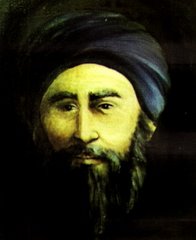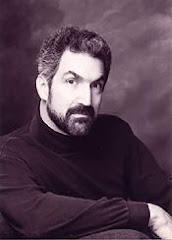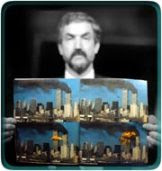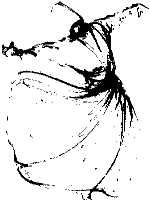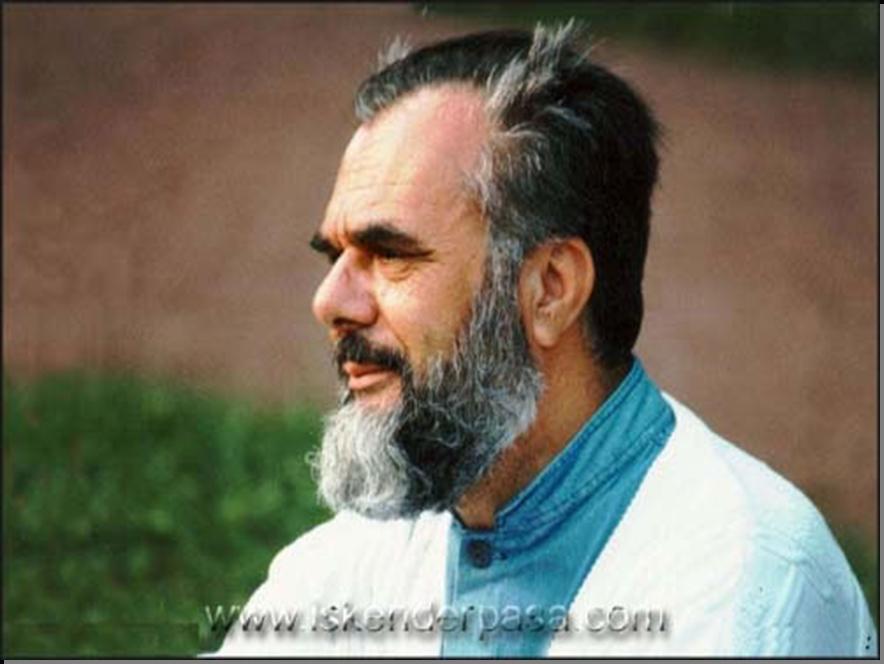As we are in the Australia Day season, we should ponder over where our nation is heading. In this respect, I want to make some general comments about tolerance.
Basically, I hate tolerance. Call me intolerant if you like. I believe that you only tolerate something or someone reluctantly. You tolerate because you have to, not because you want to.
If you are somewhat different to the majority, would you rather be tolerated? Or would you rather want to be understood and accepted?
I think it was JFK who once said: “Ask not what your country can do for you. Instead, ask what you can do for your country.” Another way to earn acceptance and respect is to contribute and to be seen to be contributing to the nation.
Many Lebanese Australian community leaders have entered the debate about ethnic crime using the politically correct catch cry of tolerance. They say it is wrong for a senior police officer or an Opposition Leader to talk about race in the context of crime. It is intolerant.
But I can't help asking how many Lebanese Australian leaders have learned to move beyond politically correct slogans. I also wonder what example some Lebanese leaders have set in relation to tolerance.
To this day, the Lebanese Muslim Association claims that it represents Sydney's Muslims. Its senior imam, Sheik Hilali, is meant to be the spiritual leader of Muslims in Australia and New Zealand. Yet the LMA continues to refuse membership to Muslims who are not Lebanese.
The LMA leaders and their predecessors (including Keysar Trad) have little moral authority to talk about racism when their own membership structure is based on a kind of apartheid within the Muslim community. If the LMA cannot even show racial tolerance toward non-Lebanese Muslims (including Aussie Muslim converts), what right do its leaders have to cry racism?
But it isn't just the LMA that discriminates against Muslims. To this day, the majority of programs on the Voice of Islam radio are broadcast in Arabic. Go to their website, and you will see the Arabic programming schedule full and the English broadcasting schedule empty. Even SBS Radio broadcasts more English language programs than the allegedly multilingual Islamic radio station.
If we look at the Lebanese community, we find a well-heeled and vibrant community that has contributed to all areas of Australian life for decades. Lebanese Australia has produced a NSW Governor, a Victorian Premier and numerous state and federal MP's.
Lebanese Australians can be found on the boards of major Australian companies, in government departments, in academia and in sport. We've all heard of Hazem el-Masri, one of Australia's top Rugby League players. Then there is National Australia Bank Chief Executive Ahmed Fahour, an avid fan of Aussie Rules. And which Aussie hasn't heard and seen the smiling face of John Symond telling us about how we can save thousands of our home loans?
I could list many more. The reality of the Lebanese community is well-known to people in the know. Sadly, Lebanese community leaders find themselves unable to communicate this reality to the broader Australian community. For this, they only have themselves to blame. Sadly, the rest of us have to suffer.
Wednesday, January 25, 2006
Lebanese Leaders should move beyond tolerance
Wednesday, January 11, 2006
Sinking the Boot
Now that the Christmas and New Year's Eve parties are over and most of us are back at work, I thought it might be a good idea to sit down and write something completely original. Something unexpected, that no one would ever expect me to write at a time like this.
Then I thought to myself: stuff it! So here, before your eyes, is perhaps the 50,000th survey of the highlights of the 2005th year since three oriental-looking dudes followed a star to the House of Lamb (the literal translation of Beyt Lahm, or Bethlehem).
For Kiwistani readers, the big news in 2005 was that you now have a Foreign Minister even more embarrassing than ours. And that powerhouse known as the New Zealand film industry has produced a movie about a rather large gorilla.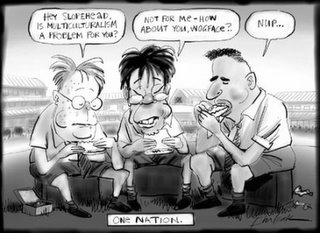 For us Aussies, two events from 2005 stand out in my mind. The first was the Socceroos' entry into the World Cup finals. The second was the Cronulla riots. Both were triumphs of sorts. Both represent two competing strands of thinking in Australia. In my opinion, only one strand is truly Australian.
For us Aussies, two events from 2005 stand out in my mind. The first was the Socceroos' entry into the World Cup finals. The second was the Cronulla riots. Both were triumphs of sorts. Both represent two competing strands of thinking in Australia. In my opinion, only one strand is truly Australian.
According to some, the Cronulla riots prove that multiculturalism doesn't work. Immediately following the riots, that allegedly conservative American newspaper calling itself The Australian devoted substantial op-ed space to articles supporting monoculturalism. The underlying sentiment of some of these articles was simple - persons of Middle Eastern appearance (and anyone else for that matter) looking, dressing, speaking or worshipping differently to 'us' had better learn to fit in, or watch out!
Not all the opinion writers had this kind of feral wind blowing out of their shuttles. But few had anything nice to say about what they saw as 'politically correct multiculturalism' or its alleged institutional offspring: the Special Broadcasting Service (SBS), anti-discrimination bodies, and Fairfax newspapers.
Even mosques were included, this despite the fact that most Aussie mosques outside Canberra operate along strict ethnic lines, so it beats me how they could be seen as examples of 'multiculturalism.' I also can't see how anti-discrimination laws implementing over three decades of legislative consensus could be seen as shallow 'political correctness.'
And what did Australia gain from the Cronulla riots? What is the legacy we are left with? Perhaps the best people to ask are the local shopkeepers and business people who rely on local and visiting beach-lovers.
Many Cronulla shopkeepers will have signed up to long-term leases, and have to pay wages to their (usually young, local) workers. Reduced sales means staff will have to be laid off. More locals will be unemployed, leading to further reduced sales.
You don't need a Nobel Prize in economics to figure out that the insistence of some people to attack others (whether those attacked be Anglo surf lifesavers or visitors resembling Jesus and Mary) in the name of intolerance and monocultural stupidity, brings more loss than gain.
But try telling that to some of the lunatic fringe that congregate around some News Limited newspapers. They might claim to be conservative (despite the fact that many are little more than senile ex-communists). But their idea of conservatism is to reject anything supported by anyone they think is left-of-centre. Even when the Left gets it right!
Then there are the ex-National Party luminaries like a certain John (who feels he is without cultural sin and ever ready to cast the first) Stone. In one of his more outrageous pieces, published in The Australian on 18 November 2005 (and republished on Online Opinion here), Stone even called for the formation of the Queen Isabella Society in Australia. (For those who don't know, Queen Isabella of Castile not only expelled the Moors and Jews from Spain in 1492 but also considerably nourished the Inquisition's programs of ethnic cleansing. It is provocative for Stone, who is clearly uncomfortable with continuing Muslim immigration to Australia, to celebrate such a figure.)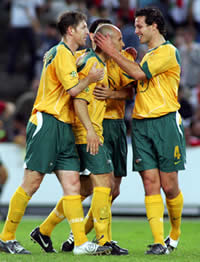 Now let's turn to the soccer. Like their Kiwi cousins, Australians love sport. Some readers will be disturbed to learn that I wore my Wallabies jersey with pride during my visit to New Zealand some two weeks ago. I was in Napier at the time, and almost caused a race riot. (In New Zealand these days, a race riot means a few Maoris smiling at me and laughing as one points his finger at my chest and declares: 'Wot are yoh dowung wierung thet jerzay ovah heyaar?')
Now let's turn to the soccer. Like their Kiwi cousins, Australians love sport. Some readers will be disturbed to learn that I wore my Wallabies jersey with pride during my visit to New Zealand some two weeks ago. I was in Napier at the time, and almost caused a race riot. (In New Zealand these days, a race riot means a few Maoris smiling at me and laughing as one points his finger at my chest and declares: 'Wot are yoh dowung wierung thet jerzay ovah heyaar?')
But after the Socceroos' performance on 16 November last year, both Wallabies and All Blacks supporters must now admit a painful truth: in the eyes of the world, REAL football is that game we used to refer to as 'pansy ball' or 'wog ball' or even 'soccer' at school.
Following its defeat of Uruguay, Australia became a World Cup Football Nation. We will now be playing the World Game. In Germany. On the World Stage.
Real football requires the deft use of feet, knees and head. Real football penalises you for using your fists or any other part of your hands, whether on the ball or on other players. In real football, you win if you pass the ball around and play as a team.
Now we have re-entered the international scene of real football, we can strengthen the real multicultural Australian community that made all this possible.
Australian football could never have reached these heights without a healthy respect for our multicultural status quo. (Are you reading this, feral conservatives? Multiculturalism is our STATUS QUO. And no, I'm not referring to the 1970s pop band.)
Like New Zealand, Australia has a tradition of welcoming migrants and respecting different cultures. Unlike New Zealand, we still haven't learnt to respect our Indigenous people. (But then again, Indigenous rights is one of those nasty Fairfax-SBS-Left conspiracies that we shouldn't blacken our conservative White faces with!)
Even during the White Australia Policy era, the rules were bent to allow Cypriot, Turkish and Middle Eastern migrants. Virtually all were from football-mad nations.
Hardly four decades after General Mustafa Kemal led Turkish troops against the ANZACs at Gallipoli, Turkish migrants commenced working alongside Australians of other ethnicities in the factories of BHP and other Australian companies. Today, their descendants in Sydney and Melbourne compete in a competition named after the Gallipoli General, the Ataturk Cup. Many worship in Sydney's Gallipoli Mosque.
The world game is an English invention. But in Australia it was largely European, South American and Middle Eastern migrants who popularised the game.
The prevalence of non-Anglos in real football has been the target of comedians. Billy Birmingham's spoof The Wired World of Sports includes a skit in which Australian soccer players have surnames like 'Lostthehousekey' and 'Sonofabitch'. At one stage, a substitute named Smith comes onto the field. The commentator remarks: 'I hope I pronounced his name correctly'.
It was and is SBS, that favourite punching bag for Australian monoculturalists, that keeps supporting, sponsoring and broadcasting soccer games from around the world, from local clubs' games to World Cup finals.
SBS remains a major sponsor of the Football Federation Australia, together with Westfield and the National Australia Bank. The head of the FFA, Frank Lowy, is a Czechoslovakian migrant of Jewish faith who began his working life as a construction labourer. The CEO of the National Australia Bank's Australian operations, Ahmed Fahour, is the son of working-class Lebanese Muslim migrants. Apart from real football, Fahour has a well-known passion for Aussie Rules.
The rise and rise of real football in Australia is a direct result of mass immigration and multiculturalism. Australia's presence in the World Cup will yield economic and other benefits for decades to come.
As for the frenzy and paranoia underpinning the beachside rioters and their pseudo-intellectual pseudo-conservative supporters, I doubt its monocultural ideology will be kicking too many goals for Cronulla or Australia.
(First published in New Matilda on Wednesday 11 January 2005)
Friday, January 06, 2006
Some thoughts on the Hadj
Muslims take their internationalism very seriously. And perhaps no more seriously than at the time for the annual Hadj, the name given to the pilgrimage to Mecca, an ancient city located in the central-west of Saudi Arabia near the Red Sea coast.
The Hadj is considered one of the 5 pillars of Islamic practice, and is compulsory for all able-bodied Muslims who can afford the trip. It commences this weekend and lasts for around 5 days.
This year, an estimated 2.5 million pilgrims from across the globe will be attending. A number of delegations from Australia and New Zealand will also be present. They will participate in an international gathering of worship, the theme of which is the struggle of Abraham and members of his family.
The three universal monotheistic faiths (Judaism, Christianity and Islam) respect and honour Abraham as the patriarch of ethical monotheism. Where today some speak of “Judeo-Christian” values, it would perhaps be more accurate to speak of “Abrahamic” values which the three faiths share.
The Qur’anic account of Abraham is similar to the Biblical one. Abraham was born in a region roughly coinciding with modern Iraq. His father sculptured idols which were worshipped in the temples of his region. Abraham’s insistence on worshipping a single invisible God was a threat to his father’s livelihood, and Abraham was forced to leave his home town.
Islamic tradition states that Abraham had two wives. His Egyptian wife Hagar bore him a son Ishmael. Both mother and child were left in a desert wilderness known as “Bakkah”. Hagar is believed to have run between two hills in a desperate search for water for her toddler.
After her seventh sprint, Hagar found her son had uncovered a spring of fresh water. She quickly built a well, known as “Zam Zam”. That well continues to quench the thirsts of the millions of pilgrims visiting “Bakkah” (now known as Mecca).
Today, most pilgrims travel in comfort. But that hasn’t always been the case. Indeed, as one Australian pilgrim’s account of the Hadj some 80 years ago shows, pilgrims faced constant danger in what were then the lawless environs of the Arabian peninsula. The journey often took years. The relatively short trip from Jeddah to Mecca to Stegar’s caravan some 10 days.
Winifred Stegar was born in London in 1882. She and her father migrated to South Australia, and married at 17 years to one Charles Stegar, a marriage that proved miserable. Some seven years after separating and leaving her four children behind, she married the love of her life, an Indian hawker (travelling salesman) named Ali Ackba Nuby. In 1927, they both set off for pilgrimage.
Stegar’s account of her Hadj journey was published in 1969 under the title “Always Bells”, and has now been republished in an anthology of Hadj writings collected and edited by American Muslim writer Michael Wolfe and entitled “A Thousand Roads To Mecca”.
Most of Stegar’s travelling companions were from the Indian sub-Continent, many of them cameleers and hawkers that made up the majority of Australia’s largely outback Muslim community at the time. Her group travelled the last leg of the journey, from the Red Sea port of Jeddah to Mecca, in a caravan of camels. The illness of many pilgrims was compounded by their insistence on fasting during the last leg of the trip.
“Most of our Indian pilgrims were very old; some even tottered on crutches and sticks. We all knew that hundreds of our company would not return again to their homeland, and many of them did not even wish to, for they deemed themselves doubly fortunate if their weary bodies could lie down in eternal rest in this, their Holy of Holies.
“So very many were weak and ill, coughing their lungs away, but still deep in the rheumy old eyes was the glint of a peace their souls longed for, a gleam of joy at something at last attempted but yet by no means done.”
For many pilgrims, th Hadj represented their only opportunity to set their affairs right with God. In many Muslim cultures, Hadj is one of the last acts of devotion a person will fulfil. For Muslims from the Indian sub-Continent, who make up around a quarter of all Muslims, the Hadj is generally not performed until children have grown up and married.
Muslims believe that the reward for a Hadj accepted by God is nothing short of Paradise. The Hadj and its hardships represent a person’s personal sacrifice to achieve salvation. All sins are washed away. This fact has generated numerous jokes and sarcastic remarks, such as the Urdu saying: “After eating several thousand mice, the cat finally decides to set off for Hadj!”
On the other hand, a precondition for going on Hadj is that a person has paid off all their debts. With this in mind, Malay and Indonesian pilgrims tend to be young adults and couples who perform the Hadj before taking on major financial commitments.
Muslims also travel to the Prophet’s grave, located in the chamber of his wife Aishah and located in the city of Medina (some 200 km north of Mecca). The grave is today contained in his mosque, and is covered by a green dome. Pilgrims experience first-hand the aura and spiritual presence of the man they regard as God’s final messenger to humanity. It is not uncommon to see pilgrims break into tears of love and longing upon setting sight on the green dome.
Much more can be said on the subject. Entire volumes have been devoted just to commentaries on the Qur’anic verses dealing with the Hadj. For anyone seeking personal accounts, perhaps the best and most moving is contained toward the end of the Autobiography of Malcolm X. There is also Michael Wolfe’s own personal account which is well worth reading and readily available in most libraries.
© Irfan Yusuf 2005
Wednesday, January 04, 2006
Usama's Real Jihad - Part 1
The image of Usama bin Ladin (UBL) is one that strikes fear into the hearts of Americans and other Westerners.
UBL and his organisation were responsible for carrying out some of the most daring and destructive attacks on the United States. UBL represents the symbol of terror, a symbol so powerful that the very mention of the name “Usama” sebds shivers down the spine of Muslims and non-Muslims alike.
Yet the name “Usama” has not always been synonymous with terrorism, just as names like “Ariel” and “Adolf” haven’t always been synonymous with genocide.
And whilst UBL may claim his type of unconventional warfare is a form of “jihad”, this term has traditionally not been associated with terror.
Who was Usama?
Usama is the name of a child, one of the favourite children of the Prophet Muhammad. To understand the historical Usama, we must understand his parents and their role in early Islamic history.
The Prophet lived some 63 years. His entire life was witnessed by an anonymous slave woman named Barakah (literally “blessing”).
The Prophet’s Mother, Amina, inherited Barakah and appointed her to be her personal assistant. Barakah was fortunate to be a servant to the most noble and kind of Arab aristocratic families. The Banu Hashim were from the purest of Arab stock and direct descendants of the Prophet Abraham and his son Ishmael.
Amina was a woman of noble lineage from one of the ruling families of Yathrib. She married into the Banu Hashim family, and her husband was the noble and handsome Abdullah. Some 2 weeks into the marriage, after falling pregnant, Amina was forced to undergo the trauma of seeing her husband undertake a risky trade journey to Syria. He was never to return, and was buried in Yathrib.
Amina gave birth to a baby boy who was named Muhammad. Barakah acted as mid-wife and helped nurse the young boy. She was with the boy throughout his life.
At age 7, the boy accompanied his mother and Barakah to Yathrib where she was to visit her family and complete her grieving process. Each day, Barakah would look after the boy while her mistress Amina would weep at the grave of her husband.
On the return journey, Amina succumbed to a fever. She died on the outskirts of a small village. Her last words to Barakah were:
“O Barakah, I shall depart from this world shortly. I leave behind my son Muhammad in your care. He lost his father while he was in my abdomen. Here he is now, losing his mother under his very eyes. Be a mother to him, Barakah. And don’t ever leave him.”
Barakah and the young Muhammad buried Amina in the sands of Arabia. Barakah never left Muhammad’s side. She later told Muhammad’s first wife Khadija: “I never left him and he never left me.”
When the young Muhammad grew up, he was gifted by his wife with a slave named Zayd. He was a young Arab boy was captured in a tribal war and sold in the slave market at Makkah. Zayd was adopted by Muhammad.
There is a famous story of Zayd’s father who searches across Arabia to find his kidnapped son. He finally hears of Zayd living in captivity and under the care of Muhammad.
The father approached his son. It was an emotional reunion. He had not seen his son for over 2 decades. The father offered Muhammad a handsome sum to buy his son’s freedom. Muhammad refused to accept a sum and left the choice to Zayd.
Islamic history reports Zayd’s response to his father’s offer as follows:
“I shall never leave this man. He treated me nobly, as a father would treat his son. Not a single day have I felt that I am a slave. He looked after me. How can I leave him and go with you? I will never leave him!”
Thereupon Muhammad publicly declared Zayd to be a free man and adopted him as a son. Zayd became known as Zayd bin Muhammad.
Both Barakah and Zayd were part of the household of Muhammad. Zayd was a handsome man in his 20’s. Barakah was an elderly sickly woman in her 50’s. Under the blessing of Muhammad, they married and had a son named Usama. This young child was a favourite of Muhammad. He was often found jumping on the back of the Prophet who was prostrating in prayer. Usama often played with the other young boys of the Prophet’s household, Hasan and Husayn.
Because of Muhammad’s love for the young Usama, the more senior disciples of Muhammad often referred to Usama as “the beloved son of the beloved”.
Usama was the product of a union between 2 people whose lives were transformed by the kindness and mercy of Muhammad. Usama eventually echoed that kindness and mercy of his spiritual preceptor and was known for his tender-heartedness and compassion toward the poor and destitute.
What is Jihad?
In the aftermath of the London bombings on 7/7, both the Prime Minister and Treasurer were reported as saying that jihad has no place in Australian society. Both can be forgiven for making such statements given the gross misunderstanding of the term in the broader community.
Jihad is a term frequently misused and abused by persons from all different faiths. Before his arrest, the Algerian man from Melbourne named “Abu Bakr” praised UBL and supporting a form of jihad which some of us might regard as terrorism.
So what is jihad? Is it war? Does it refer to killing civilians? Is it suicide bombing?
The term “jihad” is an Arabic word which literally means to struggle or strive. It is related to the term “ijtihad”, a legislative process which Canadian Irshad Manji claims to have revived, if not invented.
Both ijtihad and jihad are forms of struggle. Ijtihad refers to a struggle for finding solutions to new problems using existing sources of Islamic law. It is a process which guarantees the dynamism of the development of Islamic law. Notwithstanding Ms Manji’s claims, she is not the first writer to discuss the process of ijtihad. Indeed, it has been a common theme of Islamic legal scholarship for the past 14 centuries.
Indeed, it is by a process of warped ijtihad that UBL has claimed that the classical rules of armed jihad can be changed. The classical scholars are agreed on certain pre-conditions for an armed jihad. These include:
1. The existence of an Islamic state ruled by a properly constituted caliphate.
2. A formal declaration of war by the caliph.
3. An act of aggression on the Islamic state.
4. No women, children or other non-combatants are to be targeted.
The last of these rules is particularly regarded as being non-negotiable. As such, the September 11 attacks as well as suicide attacks targeted at individuals would be regarded as not falling within the boundaries of jihad as agreed to by Islamic jurists.
It is only by a process of what one may call “creative ijtihad”, common to both Irshad Manji and UBL, that one could argue jihad incorporates terrorism and attacks on civilian targets.
© Irfan Yusuf 2005
